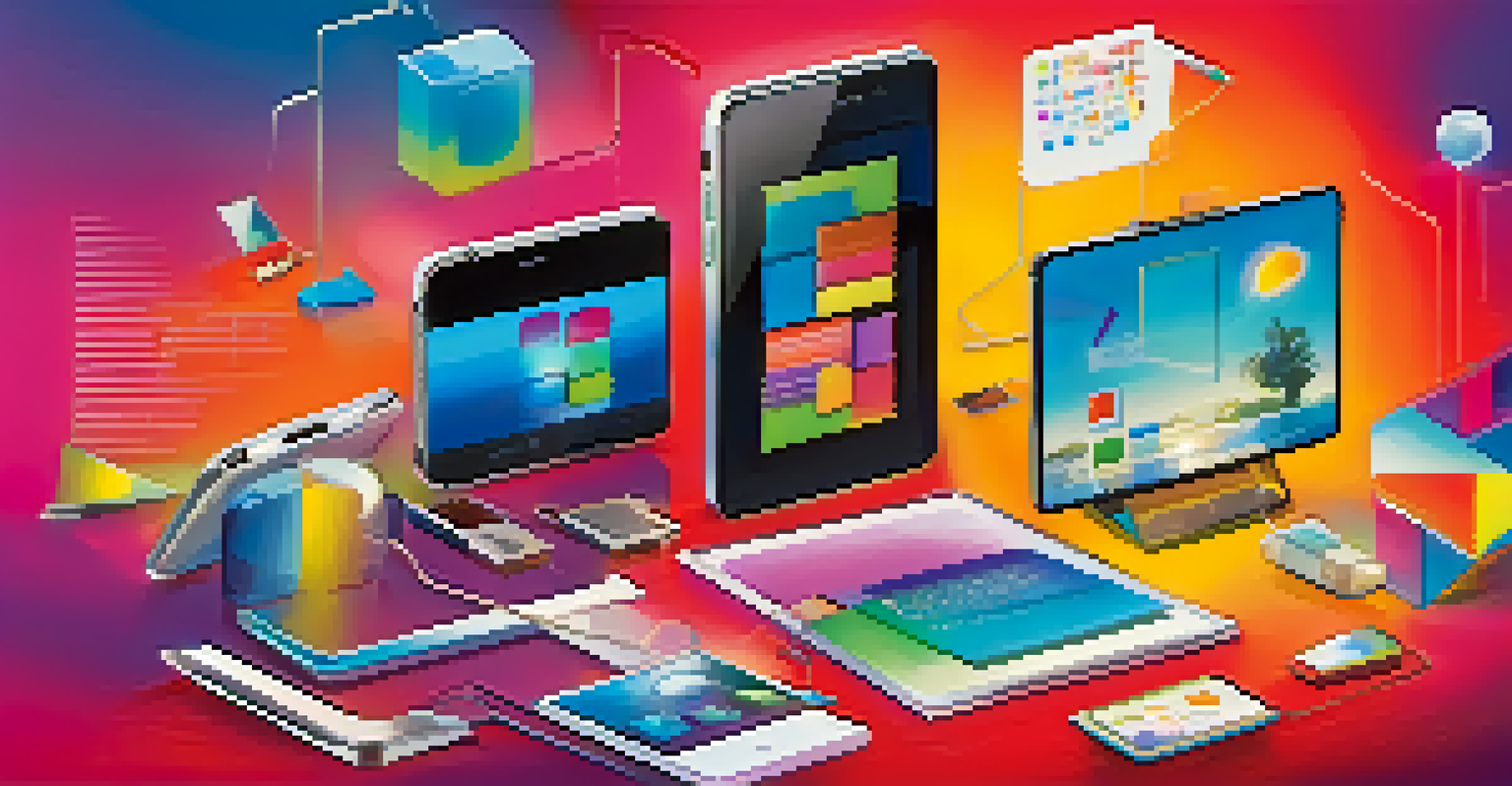Mobile Learning: Education at Your Fingertips Anywhere

Understanding Mobile Learning and Its Importance
Mobile learning, or m-learning, refers to educational experiences delivered through mobile devices like smartphones and tablets. This method of learning has gained traction due to its flexibility and accessibility, allowing students to learn on the go. Imagine being able to study while waiting for your coffee or during your daily commute; that's the beauty of mobile learning.
Education is the most powerful weapon which you can use to change the world.
The importance of mobile learning lies in its ability to break down traditional barriers to education. No longer confined to classrooms, learners can access resources, courses, and tutorials from anywhere in the world. This democratization of education opens doors for those who may have previously felt excluded from formal learning environments.
Additionally, mobile learning caters to diverse learning styles. Whether you prefer watching videos, reading articles, or engaging in interactive quizzes, there's something for everyone. This adaptability can significantly enhance the learning experience, making it more personalized and effective.
Key Features of Mobile Learning Platforms
Mobile learning platforms offer a variety of features that enhance the educational experience. From offline access to interactive content, these tools are designed to meet the needs of today’s learners. Think of features like quizzes, flashcards, and discussion forums that keep you engaged and motivated.

One of the standout features is the ability to track your progress. Many platforms provide analytics that let you see how much you've learned and where you need improvement. This feedback loop is crucial, especially for self-directed learners who thrive on knowing their strengths and weaknesses.
Mobile Learning Enhances Accessibility
Mobile learning breaks down educational barriers, allowing learners to access resources from anywhere at any time.
Moreover, mobile learning platforms often include social learning components. This means you can connect with peers, share insights, and collaborate on projects right from your device. Engaging with others can make learning more enjoyable and deepen your understanding of the material.
Benefits of Mobile Learning for Students
The benefits of mobile learning for students are numerous and impactful. First and foremost, it provides unparalleled flexibility, allowing learners to study whenever and wherever they choose. This convenience is especially beneficial for busy individuals juggling work, family, and education.
The future of learning is in the hands of those who are willing to adapt and embrace change.
Another significant advantage is the accessibility of a wealth of resources. Students can easily access e-books, articles, and multimedia content, enriching their learning experience. Imagine having a library of knowledge right in your pocket—it’s a game changer for those eager to learn.
Lastly, mobile learning fosters self-discipline and motivation. By allowing learners to set their own schedules and goals, it encourages them to take ownership of their education. This autonomy can lead to a more profound commitment to learning, ultimately resulting in better outcomes.
Challenges of Mobile Learning to Consider
While mobile learning offers many advantages, it also comes with its set of challenges. One major concern is the potential for distractions. With social media, games, and other apps just a tap away, staying focused can be difficult for some learners.
Another issue is the variability in internet access and device capabilities. Not all students have reliable access to Wi-Fi or the latest smartphones, which can create disparities in learning opportunities. This digital divide is an important factor to consider when implementing mobile learning solutions.
Flexibility Boosts Student Engagement
The flexibility of mobile learning enables students to study at their convenience, fostering self-discipline and motivation.
Lastly, the quality of content can vary significantly. While there are many excellent resources available, there are also subpar materials that may not provide accurate or comprehensive information. It's crucial for learners to be discerning and seek out reputable sources to ensure they're receiving a quality education.
Mobile Learning in Professional Development
Mobile learning isn't just for students; it's also a powerful tool for professional development. Many organizations have adopted mobile learning solutions to train employees efficiently and effectively. Imagine being able to complete a certification course during your lunch break or on a business trip.
This approach allows professionals to update their skills on the fly and stay current in their fields. The ability to access training materials anytime ensures that learning can happen in real-time, which is essential in fast-paced industries. It's like having a personal development coach in your pocket.
Additionally, mobile learning can enhance collaboration among team members. Through mobile platforms, employees can share insights, participate in discussions, and work on projects together, regardless of their physical location. This fosters a culture of continuous learning and growth within organizations.
The Role of Gamification in Mobile Learning
Gamification is a powerful tool in mobile learning that can boost engagement and motivation. By incorporating game-like elements such as points, badges, and leaderboards, educational content becomes more enjoyable. This approach taps into our natural desire for achievement and competition, making learning feel less like a chore.
For example, many mobile learning apps use quizzes that reward users with points for correct answers, encouraging them to continue learning. This instant feedback can be invigorating and help reinforce knowledge retention. Think of it as a fun way to challenge yourself while expanding your skillset.
Emerging Trends Shape Future Learning
Technological advancements like AI and AR are set to personalize and enhance mobile learning experiences.
Moreover, gamification can create a sense of community among learners. When users can see how they rank against their peers, it fosters a healthy competitive spirit. This social aspect not only motivates individuals but also encourages collaboration and shared learning experiences.
The Future of Mobile Learning: Trends to Watch
As technology continues to evolve, so does the landscape of mobile learning. One trend to watch is the increased use of artificial intelligence (AI) to personalize learning experiences. Imagine a platform that adapts to your learning pace and style, providing customized content just for you.
Another exciting development is the integration of augmented reality (AR) and virtual reality (VR) in mobile learning. These technologies can create immersive educational experiences that bring concepts to life. For instance, medical students could practice surgeries in a virtual environment, enhancing their training significantly.

Lastly, we can expect a greater focus on microlearning, which involves delivering content in bite-sized chunks. This approach caters to our busy lifestyles and helps learners absorb information more effectively. With mobile learning, education is not just evolving; it's becoming more engaging and accessible than ever before.